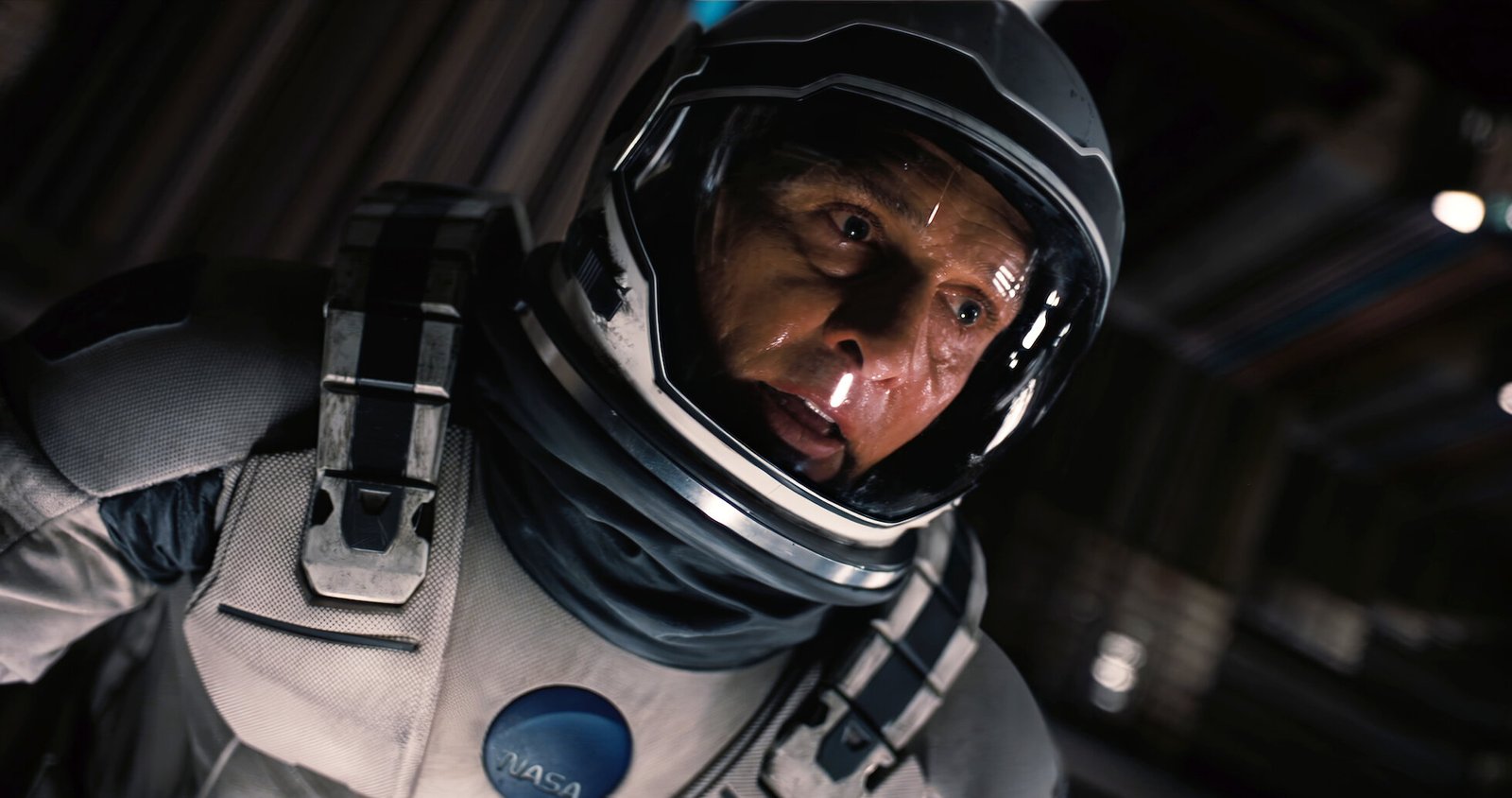
It’s been a decade since the release of Christopher Nolan’s epic science fiction film, Interstellar, and the impact it has had on the genre is undeniable. This visually stunning and intellectually captivating movie has cemented its place as a modern classic, sparking countless discussions and debates among fans and critics alike.
The Origins of Interstellar
The journey of Interstellar began long before its eventual release in 2014. In the early 2000s, renowned director Steven Spielberg was in talks with physicist Kip Thorne to develop a science fiction film that would explore the concepts of wormholes and time dilation. Thorne, a renowned theoretical physicist, was brought on board to ensure the scientific accuracy of the project.
However, in 2009, Dreamworks’ contract with Paramount Pictures ended, and the project was passed on to Nolan, who had already established himself as a master of cerebral, mind-bending films. Nolan, along with his brother Jonathan, who had written the original 2008 script, set out to craft a story that would not only captivate audiences with its visual splendor but also challenge them intellectually.
One of the key decisions that set Interstellar apart was Nolan’s insistence on maintaining the scientific integrity of the film. Thorne, who had been involved in the project from the beginning, became a crucial consultant, ensuring that the theories and speculations presented in the film were grounded in scientific reality. This commitment to accuracy is evident in the film’s depiction of wormholes, black holes, and the complex interplay of time and space.
Interstellar’s release in 2014 was a highly anticipated event, and the film did not disappoint. Audiences were swept away by the stunning visuals, the emotional depth of the characters, and the thought-provoking exploration of the human condition in the face of existential crisis. The film’s success has led to the upcoming release of a special edition book, “The Science of Interstellar,” written by Kip Thorne himself. This book promises to delve deeper into the scientific foundations of the film, providing readers with a unique opportunity to expand their understanding of the concepts presented on the big screen.
Exploring the Themes of Interstellar
At the heart of Interstellar lies a profound exploration of the human experience, with themes that resonate deeply with audiences. The film’s central character, Cooper, played masterfully by Matthew McConaughey, is a former NASA pilot who is thrust into a mission to find a new home for humanity as Earth faces the possibility of extinction.
The film’s non-linear narrative structure, which jumps between different timelines and perspectives, is a key element that sets it apart from traditional science fiction films. This approach allows Nolan to delve into the complexities of memory, the consequences of our actions, and the emotional toll of the decisions we make.
The film’s use of documentary-style interviews and testimonials adds a sense of authenticity and weight to the narrative, grounding the fantastical elements in a relatable, human experience.
The relationship between Cooper and his daughter, Murph, is the emotional core of the film, with their separation and longing for each other serving as a powerful metaphor for the sacrifices and losses that come with pursuing a greater good.
The film’s exploration of the concept of time dilation, where time passes differently depending on one’s location in the universe, is a central theme that challenges the audience’s perception of reality and the nature of existence.
Interstellar’s philosophical and emotional depth is further enhanced by the masterful score composed by Hans Zimmer. The use of the pipe organ, a rare choice for a science fiction film, adds a sense of grandeur and spiritual resonance to the film’s soundscape. Zimmer’s score perfectly captures the film’s themes of time, memory, and the human experience, creating a powerful and immersive cinematic experience.
The Casting and Characters of Interstellar

The casting of Interstellar was a crucial element in the film’s success, with the lead actors delivering powerful and nuanced performances that elevated the material.
Matthew McConaughey’s portrayal of Cooper is a standout, as he navigates the emotional complexities of his character’s journey. Cooper’s decision to leave his daughter, Murph, in order to embark on a mission to save humanity is a gut-wrenching one, and McConaughey’s ability to convey the character’s vulnerability and isolation is truly remarkable.
Anne Hathaway’s character, Dr. Amelia Brand, provides a counterpoint to Cooper’s emotional arc. As a more rigid and pragmatic scientist, Brand’s character arc explores the tension between the personal and the greater good, as she grapples with the difficult decisions that the mission demands.
The supporting cast, including Jessica Chastain as the adult Murph, also delivers strong performances, adding depth and nuance to the film’s ensemble. However, one aspect of Interstellar that has been criticized is the treatment of some of the secondary characters, who at times feel underdeveloped or serve primarily as plot devices.
Despite this, the film’s focus on the emotional journeys of its central characters, particularly Cooper and his relationship with Murph, is what truly elevates Interstellar and makes it a standout in the science fiction genre.
The Cinematic Achievements of Interstellar
Interstellar is a film that not only captivates audiences with its narrative but also dazzles them with its technical achievements. Nolan’s commitment to practical effects and IMAX cinematography is evident throughout the film, creating a sense of scale and immersion that is truly breathtaking.
The film’s use of IMAX cameras, which capture images with a level of detail and clarity that is unmatched, is a key element in its visual splendor. The sweeping shots of distant planets, the claustrophobic interiors of the spacecraft, and the awe-inspiring depictions of black holes and wormholes all contribute to the film’s sense of grandeur and wonder.
Interstellar’s visual effects are also a testament to the film’s commitment to scientific accuracy. The team of visual effects artists, led by Paul Franklin, worked closely with Kip Thorne to ensure that the film’s depictions of these complex astrophysical phenomena were as true to life as possible. The result is a stunning and immersive cinematic experience that transports the audience to the far reaches of the cosmos.
The film’s use of practical effects, such as the construction of full-scale sets and the employment of physical props, further enhances the sense of realism and authenticity. This approach, combined with the IMAX cinematography, creates a tactile and visceral experience that is rare in modern science fiction films, which often rely heavily on computer-generated imagery.
Interstellar’s technical achievements have been widely recognized, with the film receiving numerous accolades, including an Academy Award for Best Visual Effects. The upcoming release of a 4K special edition of the film promises to provide an even more immersive and visually stunning experience for fans, allowing them to delve deeper into the film’s technical and scientific foundations.
Revisiting Interstellar: A Deeper Dive
One of the hallmarks of Interstellar is its ability to reward repeat viewings, with the film’s non-linear narrative and complex themes inviting deeper exploration and analysis. For those who have already experienced the film, the release of the “The Science of Interstellar” book by Kip Thorne provides an invaluable opportunity to further enhance their understanding of the scientific concepts that underpin the story.
The book, which is now available for pre-order with a special limited edition, offers readers a unique perspective on the film, delving into the theories and speculations that informed Nolan’s vision. Thorne’s expertise as a renowned physicist lends credibility and depth to the exploration of topics such as wormholes, black holes, and the nature of time and space.
For fans who want to dive even deeper into the world of Interstellar, the book’s release coincides with the upcoming 4K special edition of the film, which promises to deliver an even more immersive and visually stunning experience. This combination of the film and the supplementary material provides a comprehensive and enriching exploration of one of the most ambitious and thought-provoking science fiction films of the 21st century.
Whether you’re a longtime fan of Interstellar or a newcomer to the film, the release of “The Science of Interstellar” and the 4K special edition offers an opportunity to revisit and rediscover the depth and complexity of this cinematic masterpiece. By engaging with the film’s scientific foundations and the creative process behind its creation, viewers can gain a deeper appreciation for the artistic and intellectual achievements that make Interstellar a true landmark in the genre.
The Legacy of Interstellar
As Interstellar celebrates its 10th anniversary, it’s clear that the film has left an indelible mark on the science fiction genre and the cinematic landscape as a whole. Nolan’s ambitious vision, combined with the film’s technical achievements and emotional resonance, have solidified its status as a modern classic, inspiring countless discussions and debates among fans and critics alike.
The upcoming release of “The Science of Interstellar” and the 4K special edition of the film provide an opportunity for both new and longtime fans to delve deeper into the world of Interstellar, exploring the scientific foundations and the creative process that brought this extraordinary cinematic experience to life.
Interstellar’s legacy extends beyond its immediate impact, as it continues to inspire and challenge audiences to think about the nature of time, the human condition, and our place in the vast expanse of the universe. As we look to the future, it’s clear that Interstellar will remain a touchstone for filmmakers and audiences alike, a testament to the power of cinema to captivate, enlighten, and transform.
So, whether you’re revisiting Interstellar or experiencing it for the first time, be prepared to embark on a journey that will leave you awestruck, contemplative, and forever changed. The legacy of this cinematic masterpiece is one that will continue to resonate for years to come.



